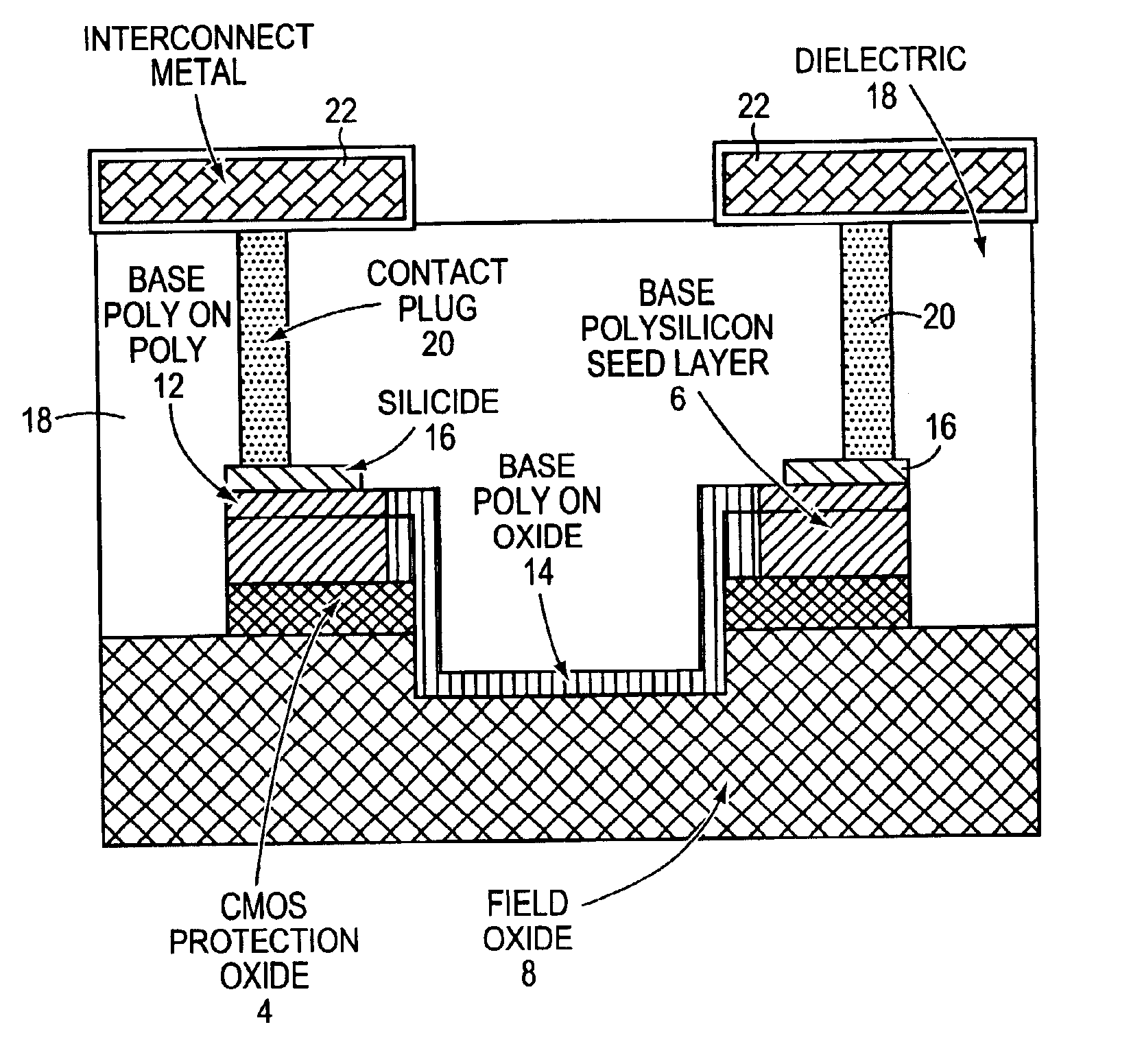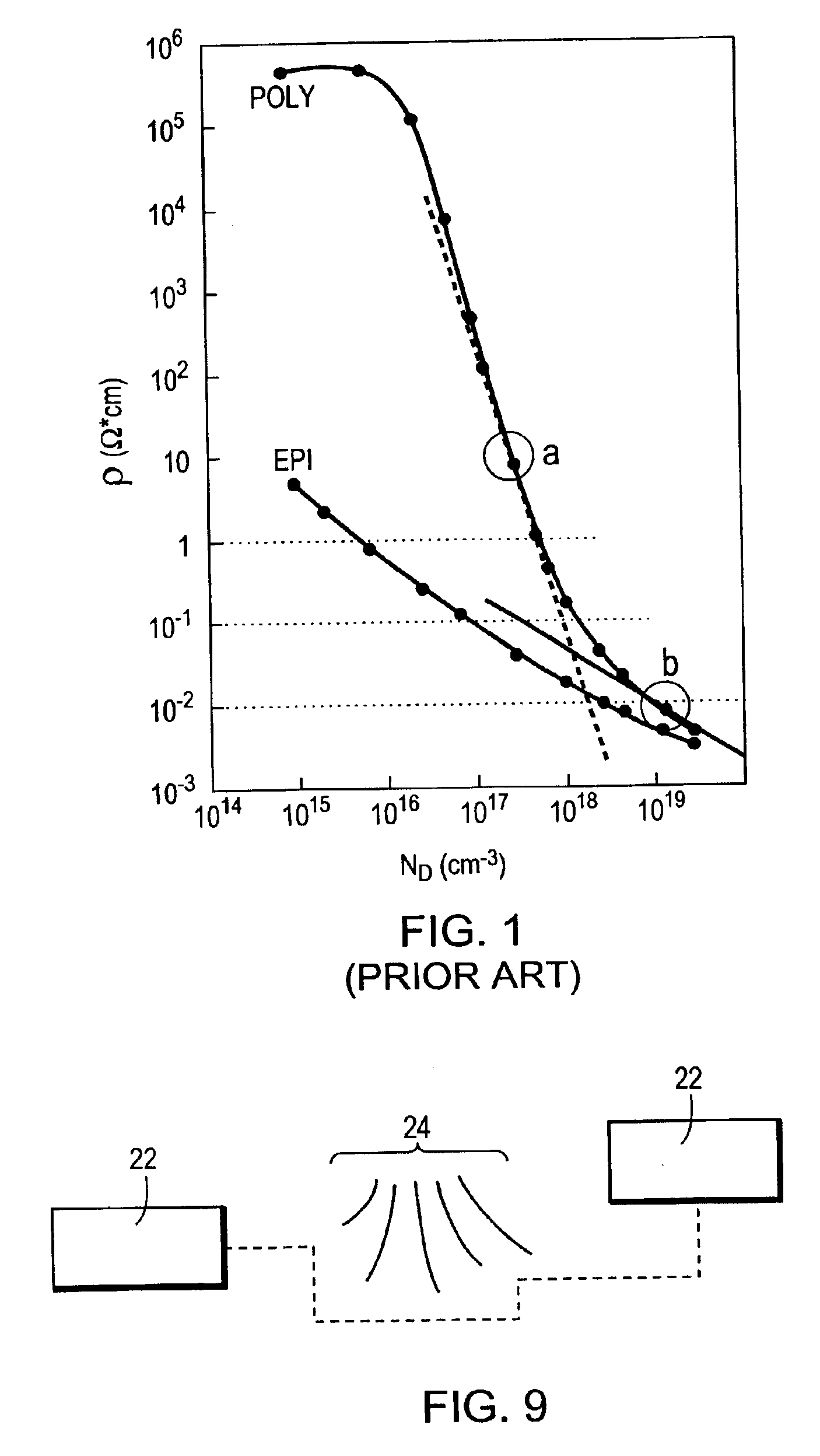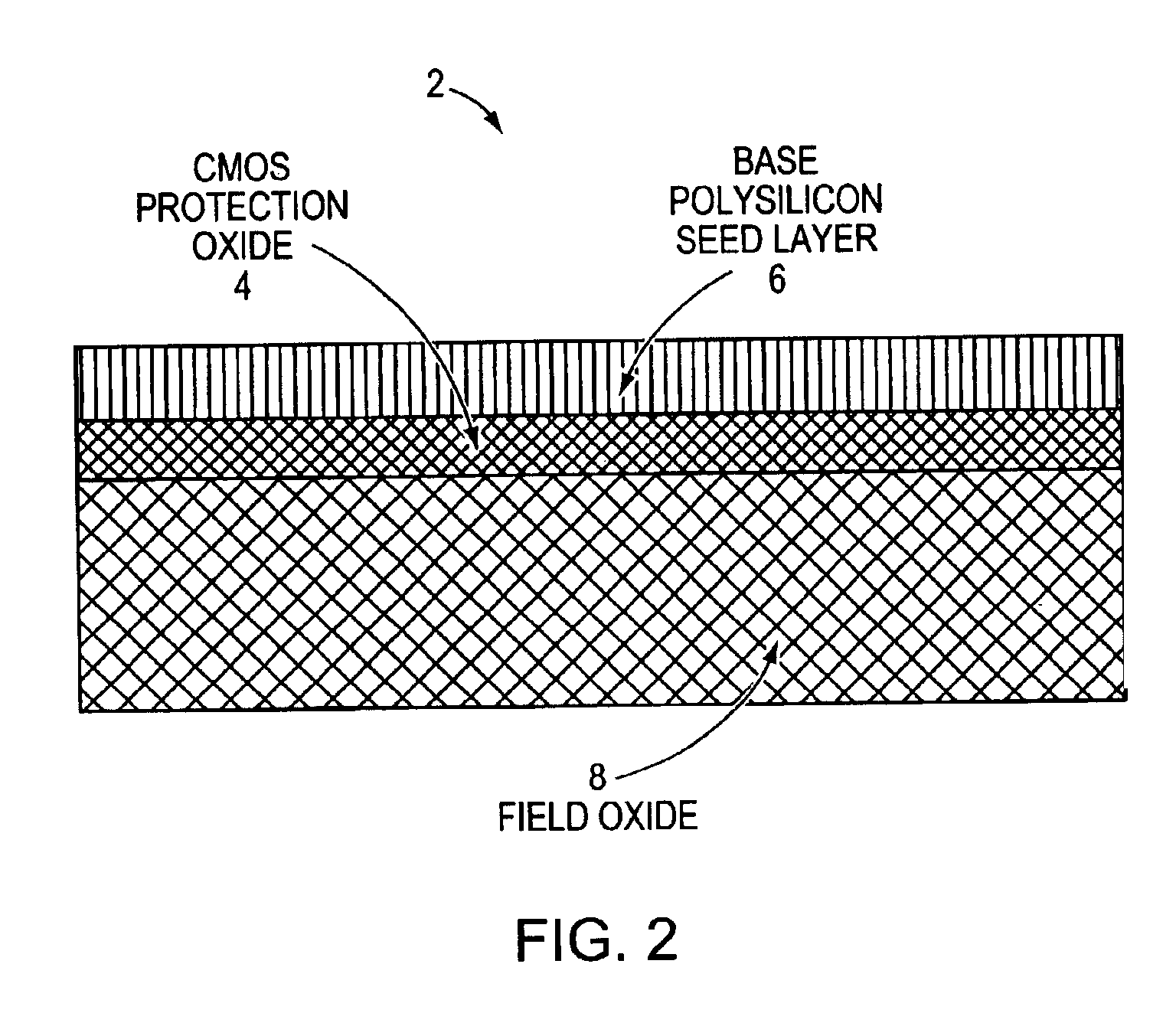High value split poly p-resistor with low standard deviation
a polysilicon resistor and standard deviation technology, applied in resistor details, diodes, semiconductor devices, etc., can solve the problems of thinned thickness still reducing the standard deviation of resistance, and achieve the effect of improving the control of resistor value, high value and increasing polysilicon resistan
- Summary
- Abstract
- Description
- Claims
- Application Information
AI Technical Summary
Benefits of technology
Problems solved by technology
Method used
Image
Examples
Embodiment Construction
[0028]EMBODIMENT High value resistors with surface resistivities between 2K ohms / square and 23K ohms / square was built in accordance with the Leibiger application. Some were built with a poly layer that determines the resistivity, see the following discussion, of a thickness of 3700 Angstroms (A), and others were built with the layer thickness of 1000 A. The thicker polysilicon leg was a 300 A a-Si, and a 3400 A polysilicon comprising a 3700 A thickness.
[0029]Another anomaly was observed for resistors with either the 1000 A or the 3700 A layers. If resistors were formed of 50 squares formed with a width of 2 micrometers and a length of 100 micrometers, resistors with five bends had consistently lower standard deviations of resistances compared to identical resistors having no bends or ten bends.
[0030]12K ohm / square resistors were built with the 1000 A layer that demonstrated and standard deviation of surface resistance of about 4%. In contrast 6 K ohm / square resistors made identicall...
PUM
 Login to View More
Login to View More Abstract
Description
Claims
Application Information
 Login to View More
Login to View More - R&D
- Intellectual Property
- Life Sciences
- Materials
- Tech Scout
- Unparalleled Data Quality
- Higher Quality Content
- 60% Fewer Hallucinations
Browse by: Latest US Patents, China's latest patents, Technical Efficacy Thesaurus, Application Domain, Technology Topic, Popular Technical Reports.
© 2025 PatSnap. All rights reserved.Legal|Privacy policy|Modern Slavery Act Transparency Statement|Sitemap|About US| Contact US: help@patsnap.com



